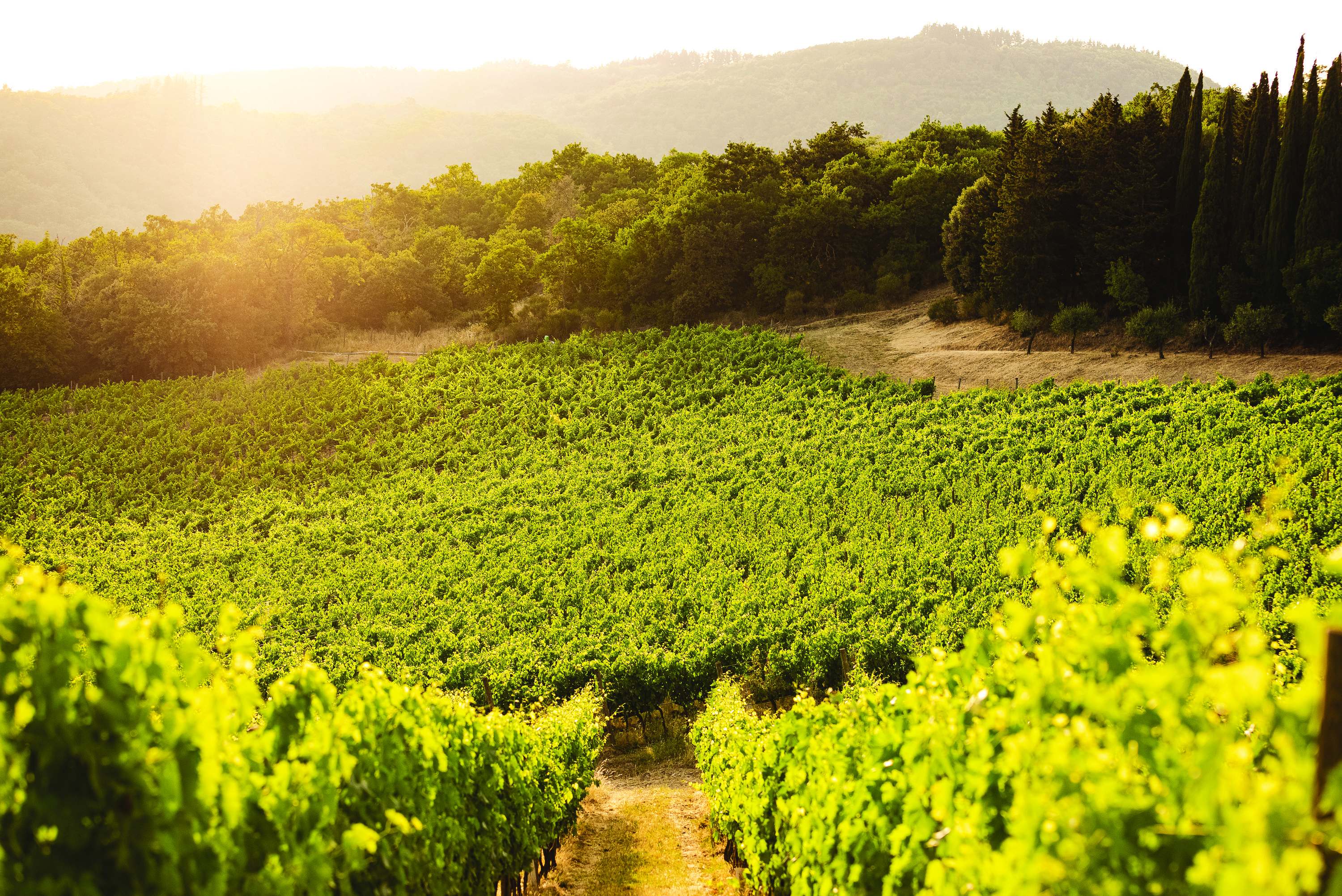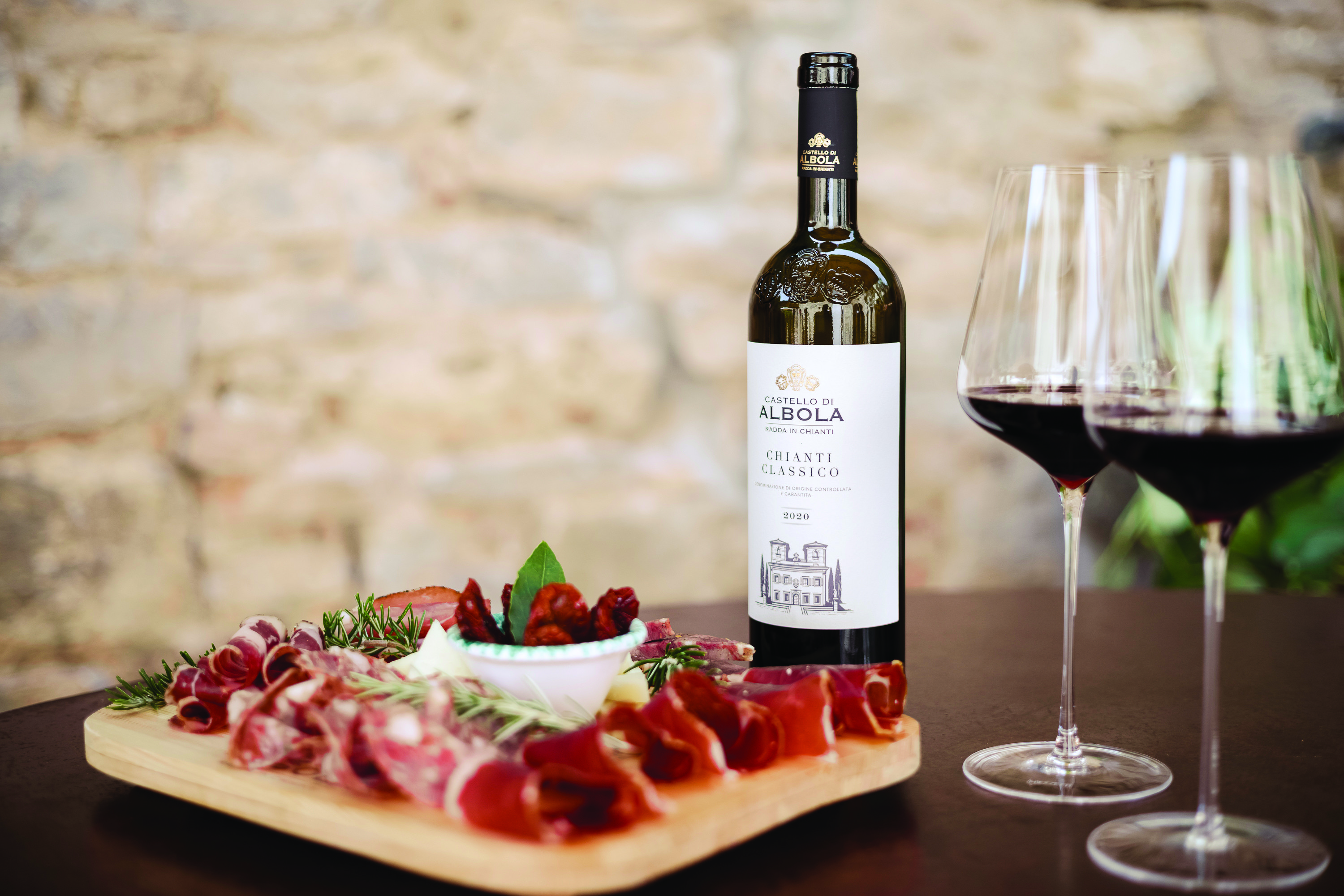
Winemaker and director of Castello do Albola, Alessandro Gallo, shares his joy in a winemaking region of major historic importance.
Alessandro Gallo was born in Acqui Terme, Piedmont, in 1971. After studying at the Umberto I School of Oenology in Alba, he graduated with a degree in Chemistry from the University of Turin in 1997. Following his passion for the world of wine and its fascinating millennial culture, he began working as a laboratory analyst at the Dezzani family winery in the renowned Monferrato area, later becoming its technical director.
In 2004, he met the Zonin family. Fascinated by Castello di Albola and sharing the authentic entrepreneurial values promoted by the family, Alessandro Gallo has been the director of the estate ever since. This place is particularly special to him. The estate has become his home, so much so that he decided to live right here with his wife and two children, at the ancient 12th-century keep. Hospitable and exuberant, Alessandro is always happy to welcome new visitors to Castello di Albola, accompanying them to discover this unique and evocative place but also inviting them to tastings of wines with great historical and cultural character.
Castello di Alabola lies in the heart of Chianti Classico. Tell us what makes this region so special.
Castello di Albola is located in Tuscany, one of the most renowned Italian regions for its rich history, tradition, art, culture and unforgettable landscapes. In addition to having been the cradle of Italian literature and the Renaissance, the land in this region is renowned around the world for its very ancient oenological history, documented as early as the 8th century BC in Etruscan times, from which some of the most celebrated Italian wines in the world are born. This territory has 42 DOC wines and 11 DOCG wines, spread throughout the region.
The historic chianti area, whose symbol is the Black Rooster, stretches between Florence and Siena, in an area that included three municipalities: Radda in Chianti, Castellina in Chianti, and Gaiole in Chianti. This is the land that Cosimo III de Medici recognised as the production area for the best wine in Tuscany, in 1716.
In particular, Castello di Albola is located in Radda in Chianti, a splendid medieval village surrounded by characteristic walls, in the heart of the Chianti production area. From the point of view of winemaking, Radda represents one of the fine styles of Chianti Classico. It is a particularly good area for wine where peculiarities such as the stone, the rugged hillside and the altitude of the vineyards determine the sweetness of tannins, the organoleptic structure, and the particular scents that make our wines elegant, long-lived and so special.
Throughout its history, this jewel of the Chianti region has belonged to the noblest Tuscan families, from the Acciaioli to the Samminiati, from the Pazzi to the Ginori Conti, and since far back as 1979, it has been owned by the Zonin family.
The estate is located in the hills of the Chianti Classico region, making its production Wines of Altitude. What impact does altitude have on the grapes that are grown there?
Castello di Albola covers approximately 900ha, 125 of which are planted with vines, and enjoys a position of excellence among the highest hills of Chianti. Here, the soils are characterised by two different geological forms, one being alberese and other galestro: this ensures excellent drainage of the soil and gives to the wines unique qualities.
The vineyards, a real heritage for the local culture, are located in territories characterised by steep slopes, between 350m and 650m above sea level, and enjoy important temperature ranges and an ideal microclimate for the production of refined wines. The historic vineyards of Selvole, Capaccia, Madonnino, Ellere, Marangole, Mondeggi, Sant'Ilario and Acciaiolo are set at altitudes between 350m and 550m and receive light, as they say in Chianti, “from sun to sun”. Albola’s signature vineyard is definitely Il Solatio, which climbs a breathtaking slope on stony ground between 550m and 580m. Finally, above 580m, there are the very high Chardonnay vines (our prestigious Chardonnay is called Poggio Alle Fate). It is precisely these high altitudes that give rise to unique wines of excellence that continue to receive coveted national and international recognition.

What are the key styles that Castello di Albola produces and what grapes are mostly grown?
The main grape variety is Sangiovese, whose clonal selections have been best adapted in the Chianti region. We cannot forget that the clone of Sangioveto, which is the ancient name for Sangiovese Grosso di Toscana, is the symbol of Chianti. This is a late-ripening red grape variety, the harvest of which takes place between the last week of September and the first week of October.
In addition to Sangiovese, spread over about 90% of Castello di Albola’s vineyard area, the other prestigious “red berry” is also cultivated: Cabernet Sauvignon, used to produce the Super-Tuscan Acciaiolo. The estate’s prestigious vineyards also host the growth of the white grapes of Chardonnay, Trebbiano and Malvasia del Chianti, the latter two being indispensable to produce the rare Vinsanto di Castello di Albola, another signature product with Tuscan character. To ensure proper and prolonged maintenance, the vines are planted withspurred cordon and guyot. For the protection of this terroir, there is a constant renewal of the plantings, with an average age of about 20 years or more.
Sustainability has always been key to the estate. Let’s talk about the Sustainability Report…
Castello di Albola prepares this Sustainability Report with the aim of reporting on the activities carried out in the field of sustainability and describing the achieved objectives and the plans adopted for improvements.
The certification was issued by Equalitas, an Italian body founded in 2015 that promotes sustainability in the agrifood sector, and wine in particular, through a systemic vision capable of uniting the needs of companies, society and the market. The main objective is to define, structure and share a unique and shared approach to sustainability based on its three fundamental pillars. Thanks to its technical, cultural, scientific and political resources, Equalitas intends to bring together the best initiatives of established and innovative best practices, to establish an Italian model of sustainable quality at a global level.
The Equalitas Scientific Committee, composed of distinguished members of the technical and scientific community in the sector, guarantees the continuous adoption of the standard according to the most advanced knowledge available, also acting as an impartiality committee for the management of the standard itself.
This objectivity and transparency are fundamental for the authority of the Equalitas ethic, as an added guarantee for the consumer. The Equalitas-Sustainable Wine standard allows companies in the sector to adopt an internal Sustainability Management System and to publish an Annual Sustainability Report, guaranteeing their stakeholders continuous improvement of their sustainability standards.


